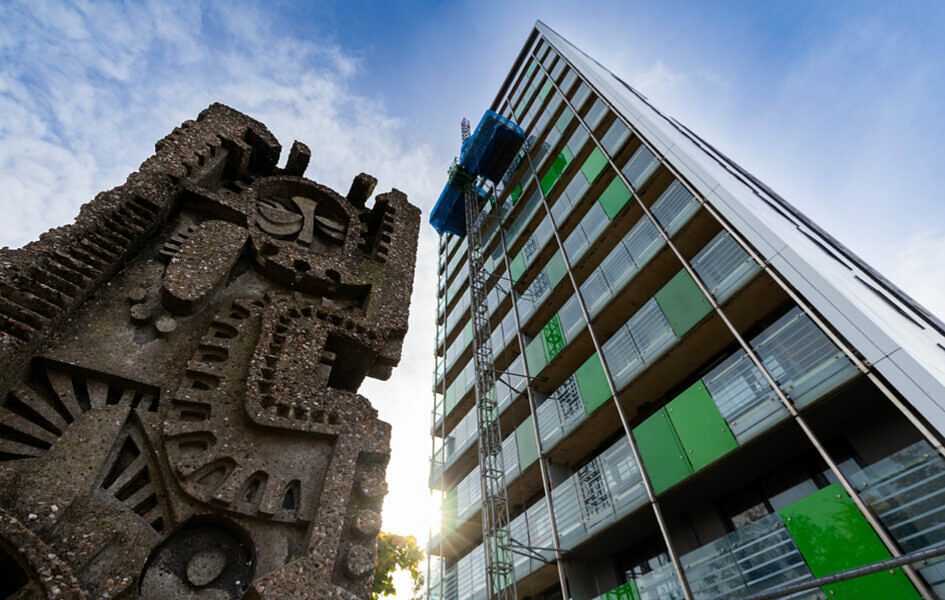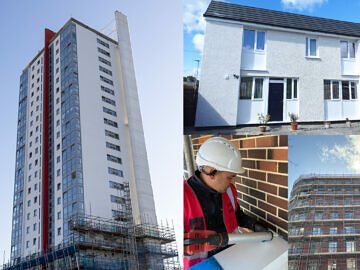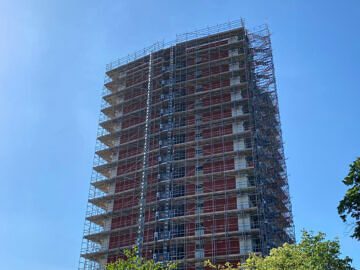In the world of construction, sustainability is becoming an increasingly important factor. As we strive to reduce our environmental impact and create buildings that are not only functional but also eco-friendly, various techniques and practices are being adopted.
The practice of recladding is now gaining more traction, and here at Hamilton we are recladding experts!
But what exactly is recladding, and why is it important for sustainable construction?
Recladding involves replacing the exterior cladding of a building with new materials. This process can be undertaken for various reasons, including enhancing aesthetics, improving energy efficiency, and addressing safety concerns.
At Hamilton, we specialise in recladding facades, whether it’s for new builds, refurbishments, or partnerships as a contractor or subcontractor.
One of the key reasons recladding is gaining prominence in sustainable construction is its ability to improve energy efficiency. Older buildings often have inefficient cladding materials that contribute to heat loss or gain, leading to increased energy consumption for heating and cooling. By installing modern, energy-efficient cladding materials during recladding projects, buildings can significantly reduce their energy usage and carbon footprint.
Recladding also plays a crucial role in enhancing the safety and durability of buildings. In light of recent events such as the Grenfell Tower tragedy, where flammable cladding contributed to the rapid spread of fire, there’s heightened awareness about the importance of ensuring building facades meet stringent safety standards.
We are experienced in recladding projects funded by initiatives like the Building Safety Fund and Cladding Safety Scheme, working diligently to improve the safety of buildings across the UK.
Click here to learn more about schemes such as this.
In addition to safety and energy efficiency benefits, recladding also offers opportunities for aesthetic enhancement and modernisation. By updating the exterior appearance of a building with contemporary cladding materials, it can breathe new life into older structures while aligning with current design trends.
As we move towards a more sustainable future, the role of recladding in construction will continue to grow. It presents an opportunity not only to improve the performance and safety of buildings but also to reduce their environmental impact.



